Zakros Archaeological Site: History Revealed
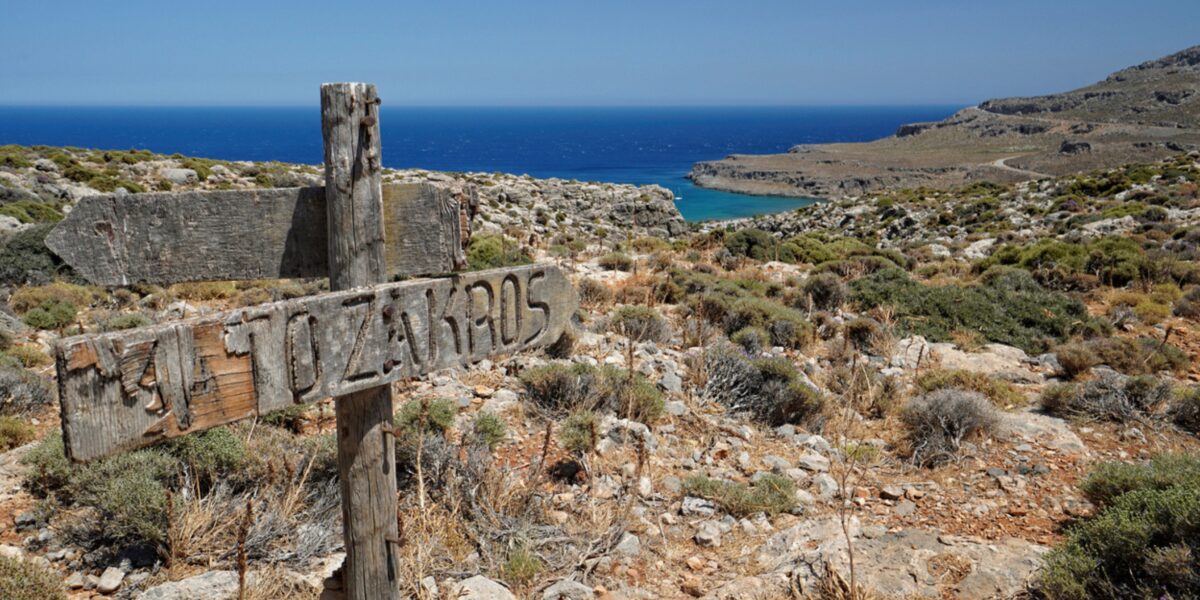
Zakros Palace is located on the beautiful island of Crete.
It shows the greatness of the Minoan civilization. This archaeological site gives us a special look into the lives and skills of these ancient people. As we explore the Zakros Palace, we will discover its interesting buildings. We will also see how important it was to the Minoan civilization and the lovely nature around it.
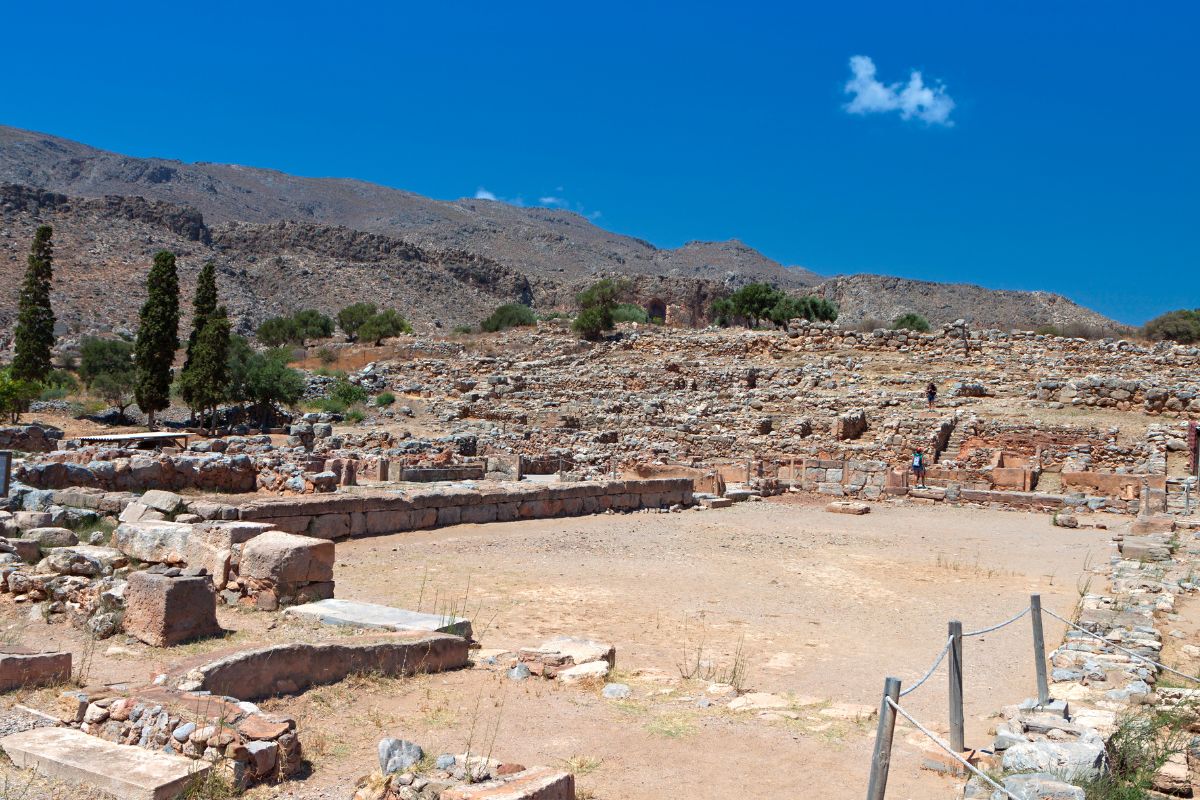
Uncovering the Past of Zakros
The story of Zakros is like an interesting book. It shows the rise and fall of the Minoans. People first lived in Zakros around 2000 BC. They built two great palaces there. The first palace was made during the Middle Minoan time. It was destroyed by a terrible earthquake around 1700 BC.
The Minoans did not give up, and they built a New Palace that thrived for a long time. Sadly, another strong earthquake hit around 1450 BC. This, along with other reasons, caused the Minoan civilization to decline. By 1200 BC, Zakros was left empty.
The Significance of Zakros in Minoan Civilization
The archaeological site of Zakros offers important information about the Minoan civilization. It shows their skills in trade, their beliefs, and their building styles. Zakros is located on the eastern coast of Minoan Crete, which helped it become a center for trade with places like Egypt, Cyprus, and the Levant.
Findings such as Linear A tablets and imported goods prove that Zakros was a busy trading hub. These discoveries help us see how advanced the Minoans were in their buildings, their global connections, and how they influenced culture during the Bronze Age.
Also, Zakros shows how Minoans used their creativity in relation to the natural world of Crete. The palace features various designs, like its maze-like layout, light wells, and clever drainage system. These details reveal their understanding of the environment and show their desire to blend their buildings with nature.
Discoveries That Redefined Ancient History
Excavations at Zakros have uncovered many artifacts that changed how we see the Bronze Age. One important find is the Linear A tablets. This writing is not fully understood yet. However, it is thought to offer valuable information about Minoan trade and government.
Also, the Heraklion Archaeological Museum protects many treasures from Zakros. The museum has beautiful pottery, detailed jewelry, and special objects used in ceremonies. These items show the Minoans’ artistic skills and craft. They give us a real sense of their luxurious way of life and complex beliefs.
Additionally, the discovery of goods from other places, like Egyptian stone vessels and Cypriot copper ingots, shows that Zakros played an important part in a strong network of trade during the Bronze Age.
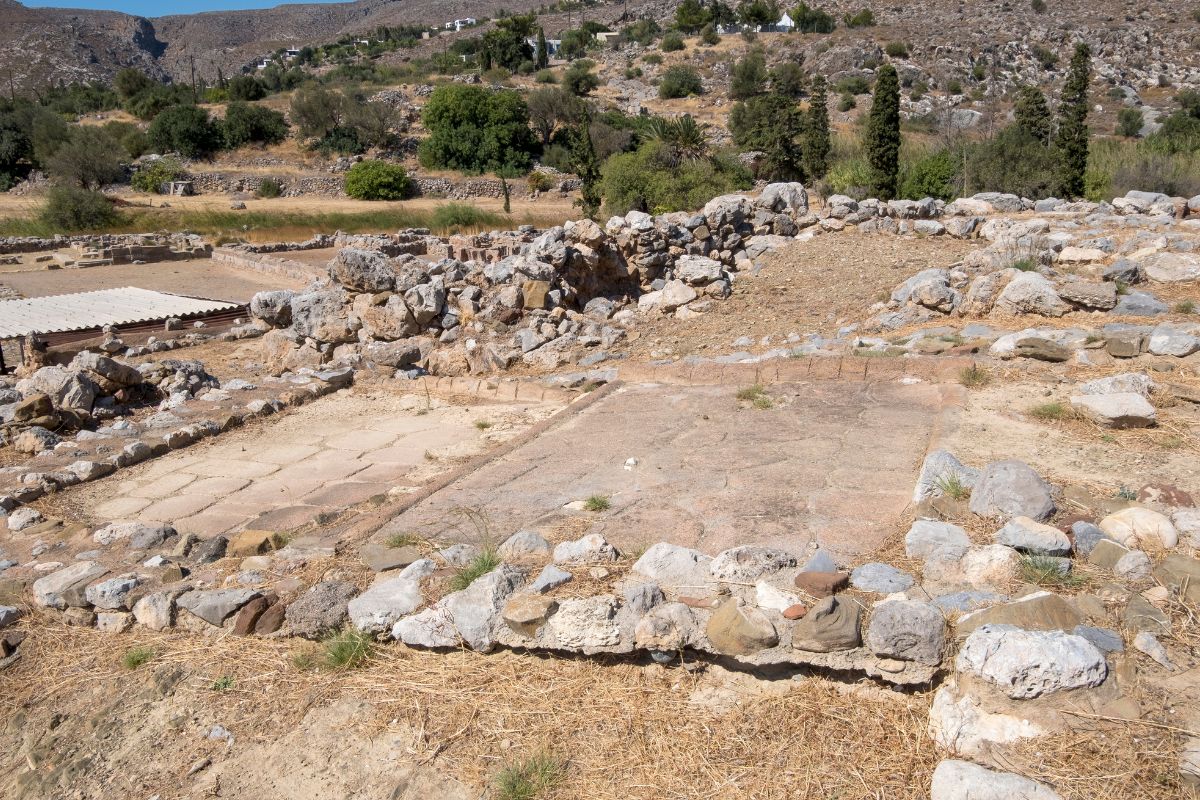
The Minoan Palace of Zakros
The Minoan Palace of Zakros shows off amazing design and smart location. This palace covers over 8,000 square meters. It was not just a home for rulers. It was also an active center for important government, religious events, and business.
The palace is also very beautiful. The walls have detailed frescoes. These frescoes show scenes of daily life, religious practices, and the natural world. They give us a look into the Minoans’ art and way of thinking.
Architectural Marvels of the Minoan Era
The Palace of Zakros is an amazing building that shows the smart designs of the Minoans. It was made from strong stone blocks and has a large central court in the middle. This open area gets a lot of sunlight and was used for ceremonies, meetings, and management tasks.
One interesting part of the palace is its clever drainage system. The Minoans built connected channels and clay pipes to direct rainwater away from important areas. This shows how good they were at working with water.
The palace also has light wells set in different places. These let in natural light, making the inside brighter. This simple idea shows how the Minoans used nature to make their buildings more practical and beautiful.
Daily Life and Culture in Ancient Zakros
Evidence shows that the people of Zakros lived a rich and lively life. Olive oil was very important in their daily lives. It was a key part of the Minoan diet and economy. The finding of many olive presses and storage jars in the palace and nearby town shows how important this industry was.
Archaeological discoveries like loom weights and spindle whorls suggest that Zakros had a strong textile industry. Skilled workers likely made beautiful fabrics with detailed designs. This shows how the Minoans valued fine clothing and quality work.
Excavations have also found signs of small gardens next to homes. This means that people grew herbs, vegetables, and fruits to eat. These discoveries give us a clear look into the daily life of the Minoan people. They show their ability to provide for themselves, their creativity, and their close relationship with the land.
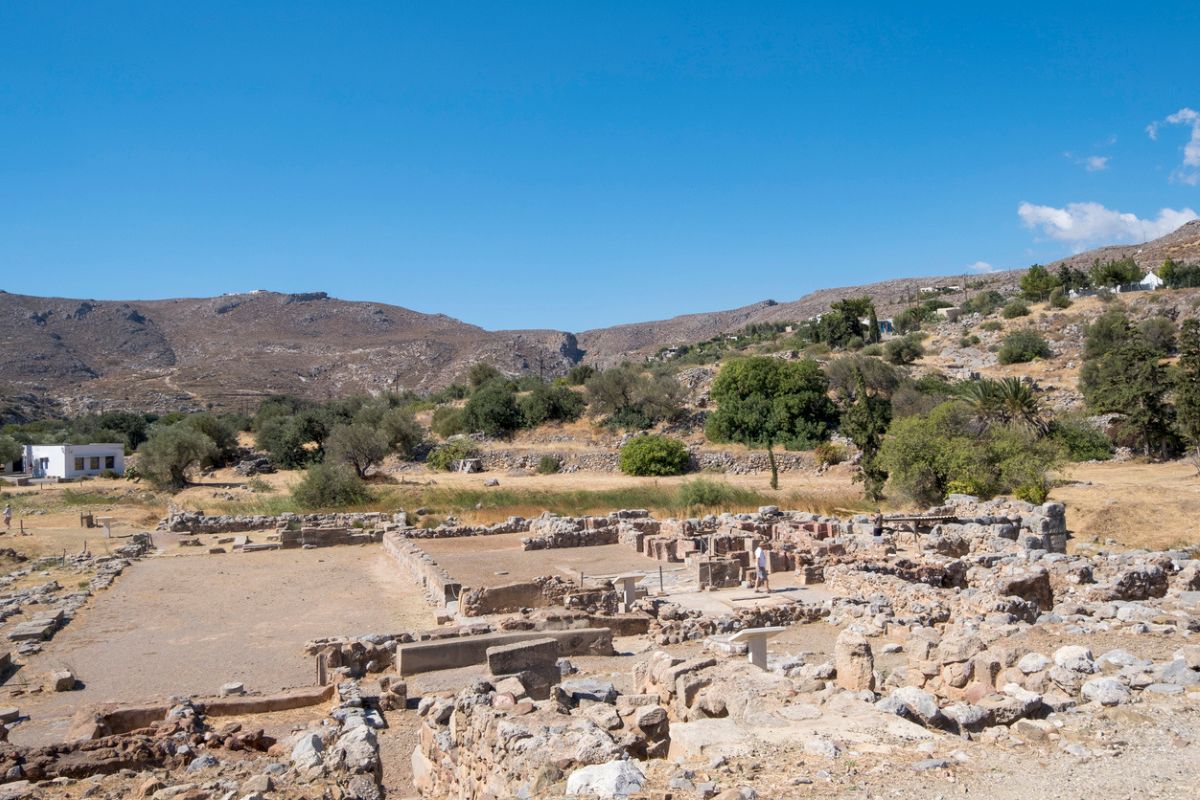
Archaeological Excavations: Methodologies and Findings
Initial digs at Zakros started with D.G. Hogarth in 1901. Later, in 1961, Nikolaos Platon discovered the palace and showed how important it was. Using careful digging methods, archaeologists revealed many layers of history. They uncovered the structure and detailed features of this Minoan site.
The excavations found many treasures, including Linear A tablets, finely made pottery, ceremonial items, and tools for everyday use. Experts analyze and interpret these findings. This work helps us learn more about the Minoan world. It gives us a clear view of their customs, beliefs, and daily life.
Key Excavations and Their Impact
The excavations led by Nikolaos Platon at the site of Zakros, starting in 1961, were very important for Minoan archaeology. Platon’s careful work found the almost untouched Palace of Zakros. This gave us valuable information about a civilization that seemed to stand still in time.
His team discovered the palace’s beauty. They showed off its complex design, advanced systems, and rich decorations. They also found storage rooms, workshops, and religious areas. This helped us understand daily life, economic systems, and spiritual beliefs of the Minoan people.
Additionally, the work at Zakros sparked new interest and discussions about the Minoan civilization. It led to more studies of their art, culture, trade, and the reasons for their sudden decline.
Artefacts That Tell a Thousand Stories
Each item found at Zakros helps us understand more about Minoan civilization. Copper ingots found in storage rooms suggest they had a strong trade network that reached across the Mediterranean. These heavy items show their skill in moving goods over long distances and their role in the international bronze trade.
A lustral basin is also present. This sunken room is thought to be used for ritual cleaning. It gives us a view into Minoan religious practices and their focus on cleanliness.
The beautiful pottery found there features detailed designs and scenes from nature. This pottery shows the Minoans’ great artistic talents. It was often discovered in homes and ritual places, giving us a look into their daily life, rituals, and art.
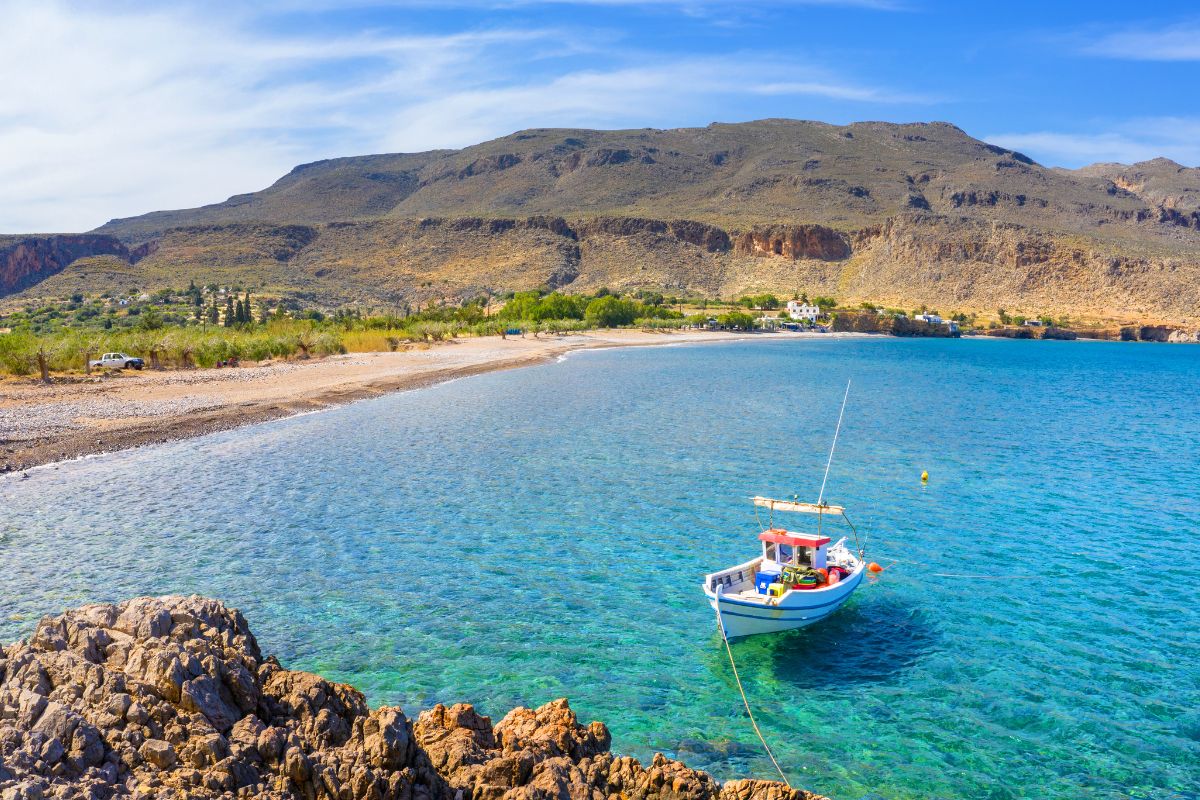
The Role of Zakros in Trade and Economy
Zakros is located on the eastern coast of Crete. It was an important port during the Bronze Age. The safe harbor of Zakros welcomed boats from around the Mediterranean. This helped trade in goods, resources, and ideas to grow quickly.
Many signs show that Zakros was important for exporting olive oil, wine, and textiles. It also acted as a point for bringing in imports like copper, valuable metals, and luxury items from Egypt and the Near East.
Zakros at the Crossroads of Ancient Trade Routes
Zakros is a harbor town located in East Crete. It was an important spot for ancient maritime trade routes. Ships came from the Cyclades, mainland Greece, Cyprus, and other booming areas. They gathered at this busy port to exchange goods, learn, and share cultures.
Zakros was key in linking the Minoan civilization to the Mediterranean world. Researchers have found foreign items like Egyptian scarabs and Cypriot pottery alongside local goods. This shows how far their trade network reached.
Today, visitors can explore the ruins of Zakros. They walk in the footsteps of sailors, merchants, and travelers who once passed through this trading hub. This allows them to feel the history of when East Crete was a lively center for trade and cultural exchange.
Economic Activities and Their Historical Significance
During the Bronze Age, Zakros grew as a center for production and trade. It played a big role in the success of the Minoan civilization. The rich lands around Zakros produced many olives, grapes, and other crops.
Olive oil became very important to Zakros’s economy. Archaeologists found that they used advanced methods to press and store olives. This allowed them to send their olive oil, known as liquid gold, across the Mediterranean.
Trade in olive oil, along with textiles, ceramics, and other goods, made Zakros a key economic hub. This busy trade by sea helped the town grow, supported skilled crafts, and allowed the exchange of knowledge and cultural ideas with the rest of the Mediterranean world.
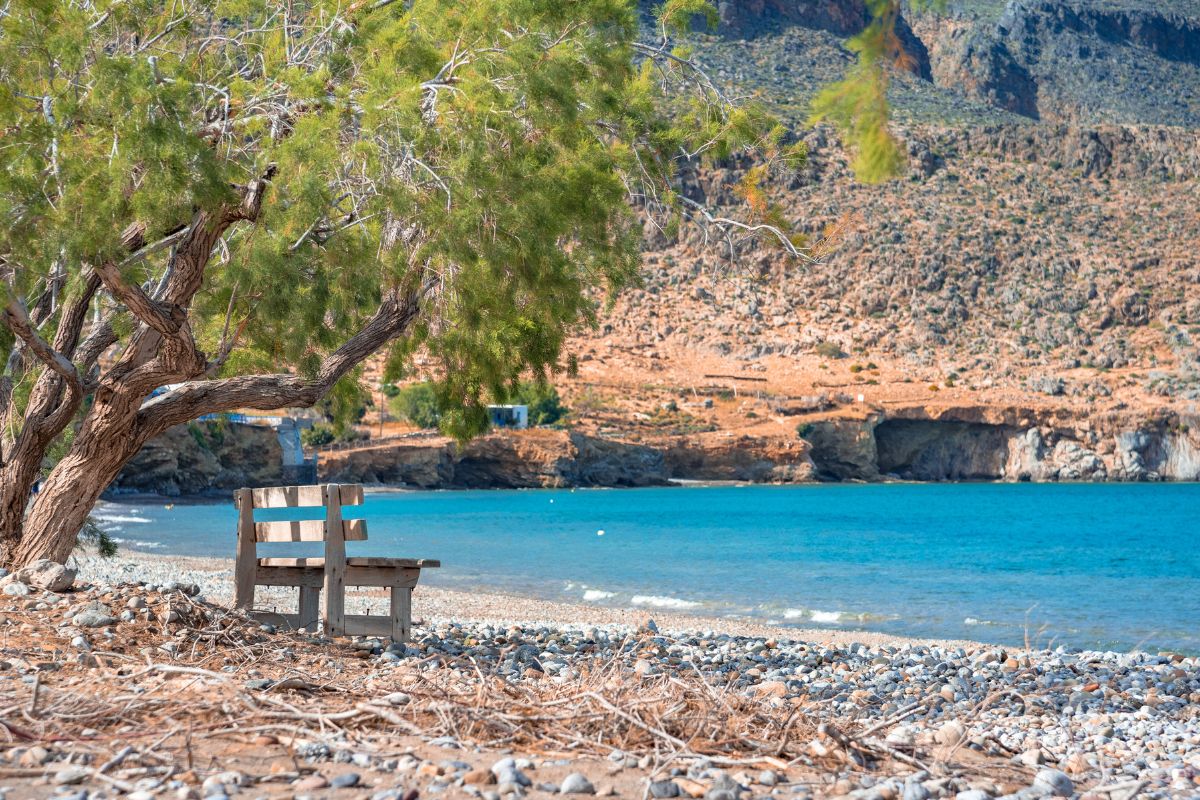
Religious Practices and Rituals
Much is still unclear about Minoan religion. However, archaeological finds at Zakros give us helpful insights into their spiritual practices. The presence of shrines, places for offerings, and ritual items shows that they had strong beliefs in gods and valued rituals in their everyday life.
The finding of the lustral basin is important. It was a space for ritual cleansing, which shows how significant purification ceremonies were to them. These buildings and items are still mysterious. They fascinate both scholars and visitors, providing a look into the spiritual world of this puzzling civilization.
Unearthing the Spiritual Life of the Minoans
Exploring the archaeological remains of Zakros reveals interesting details about the spiritual beliefs and practices of the Minoan civilization. We don’t completely understand their religion, but we can see that sanctuaries, offerings, and sacred images were part of their palace life. This suggests that their belief system was complex and influenced every part of Minoan culture.
The discovery of figurines showing female deities, often linked to fertility, nature, and protection, shows that goddesses were very important in their religion. These figurines are usually found in homes and sacred places. They give us a look into how the Minoans saw the world and their connection to the divine feminine.
Rituals likely included offering food, drinks, and other gifts. We know this because ceramic jars, animal bones, and other symbolic items were found in special sacred areas. These practices likely helped them ask for blessings, ensure fertility, and keep a good relationship with their gods and goddesses.
Sacred Sites and Their Meanings
Within the Zakros Palace, there were special places for religious practices. These areas show how important religion was in Minoan society. A shrine in the palace, decorated with beautiful images and various ceremonial items, highlights how central rituals were to their daily life.
The finding of offering pots, which had votive objects, leftover food, and drinks, gives us insight into how the Minoans connected with the divine. These offerings likely showed thanks, asked for help, or tried to please the gods and goddesses who influenced their lives.
In addition, evidence shows that caves and mountain tops in Minoan Crete were also regarded as sacred. Votive offerings and ritual items found in these natural sites suggest a belief that the sacred and the natural world were connected. This belief recognized the power and presence of the divine all around them.
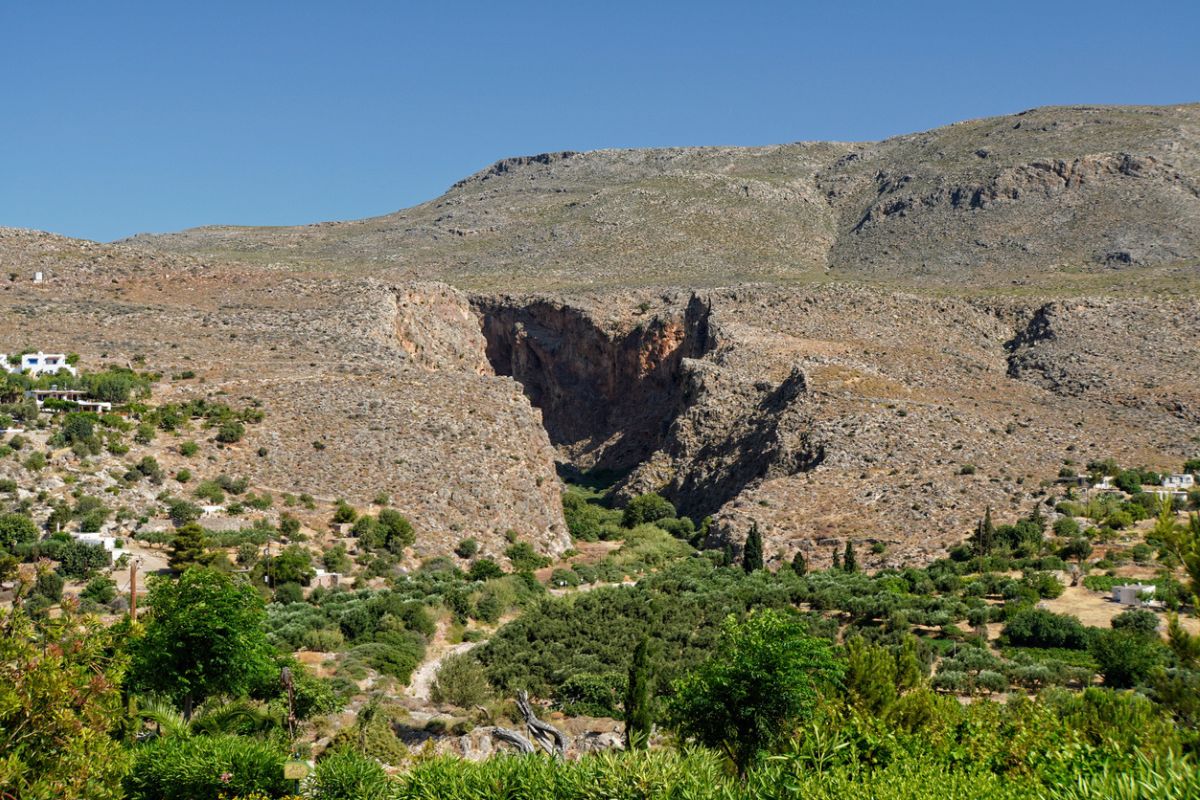
Zakros and Its Natural Environment
The beautiful natural scenery around Zakros was very important in shaping the lives and beliefs of the Minoan people. Zakros is located in the Sitia Geopark, a place known for its rich wildlife and unique rocks. This area has a special ecosystem that connects closely with its cultural history.
Flora and Fauna of the Region
The Sitia Geopark includes Zakros and its nearby areas. It has a rich mix of plants. You can find fragrant herbs, wildflowers, and tough shrubs that survive in the dry climate. The olive groves are a key part of the Cretan hills. They shine silver-green and show how important olive oil production is to the area.
Many different animals live in the Geopark’s habitats. Birds of prey, like eagles and falcons, fly above the rough mountains. Smaller birds can be seen among the olive branches and wildflowers.
The «Gorge of the Dead» has a special microclimate. It offers refuge for reptiles, insects, and unique plant species. This shows how important this stunning landscape is for nature.
Environmental Conservation Efforts at the Site
Authorities in Sitia and Crete know how important it is to protect the natural heritage of this old site. They have started many environmental efforts in and around Zakros. Responsible tourism programs aim to reduce the impact of visitors on the area. These programs also help people learn about and value the delicate ecosystem.
In this dry region, it is crucial to save water. Sustainable irrigation methods are being used to help with this. Protecting springs and aquifers is also important. Keeping these water sources safe helps the health of the ecosystem. It benefits both people and wildlife.
Local communities, conservation groups, and government bodies are working together. They focus on keeping biodiversity, controlling harmful species, and using land in a sustainable way. This work helps ensure that the beautiful natural landscapes around Zakros are protected for future generations.
Zakros Hiking
For those who love outdoor activities, Zakros offers a special chance to explore history while enjoying beautiful hikes. The Zakros Gorge is a natural gem shaped by nature over many years. It gives hikers a tough yet satisfying trail to follow.
This 4.5 km (2.8 miles) path goes down from the high ground near Zakros village to the clear blue waters of the Libyan Sea. Hikers will walk along a trail filled with colorful wildflowers, aromatic herbs, and old ruins, allowing them to experience the area’s nature and culture.
As they make their way through the winding gorge, hikers can enjoy stunning views, see unique wildlife, and feel a deep connection to the land and its past.
In conclusion, the Zakros Archaeological Site shows the interesting life of the Minoan civilization. It gives us a look into their amazing buildings, cultural habits, and trade activities. Carefully done digs and fascinating artifacts keep Zakros exciting and allow visitors to learn about its history. The site reveals much about their religious practices and trade routes. Efforts to protect it and the chance to hike around enhance our knowledge of this special place. Exploring Zakros is not just about traveling through time, but also about understanding human history and creativity.
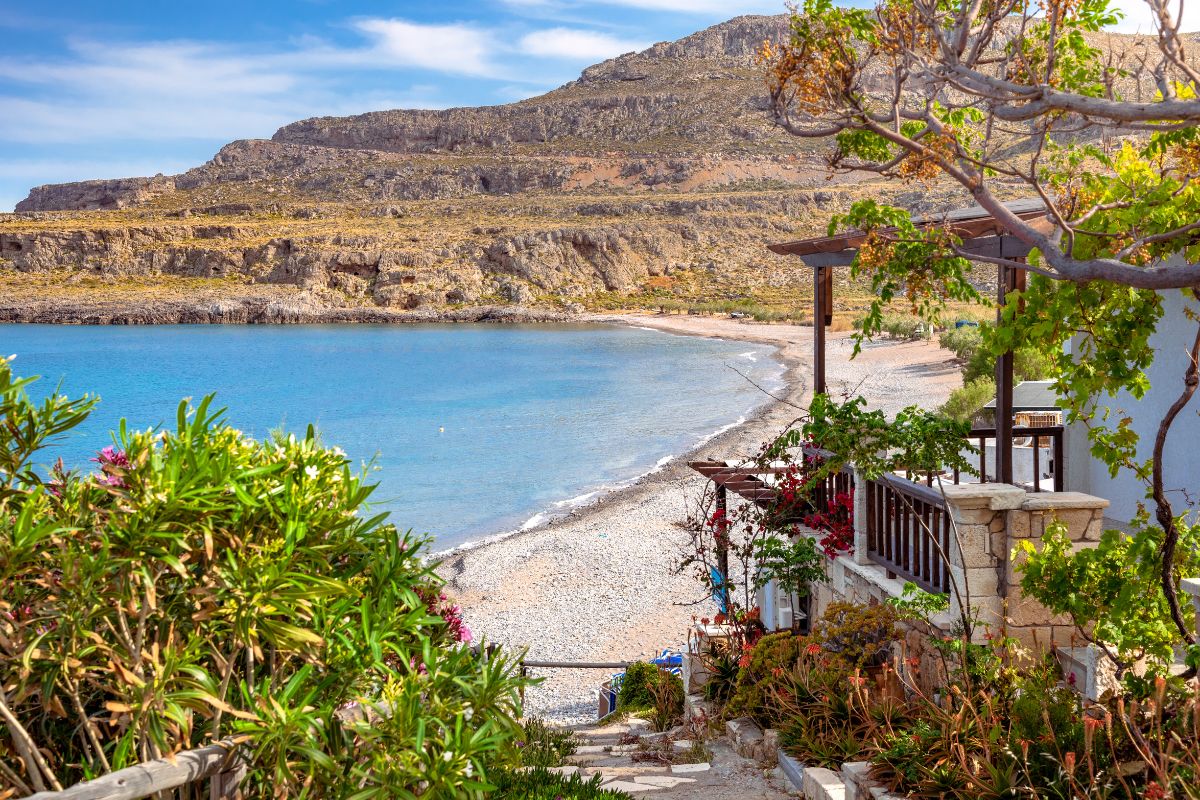
Frequently Asked Questions
How did the Minoans influence Zakros?
The Minoans made Zakros, Crete, an important center of their culture. You can see their impact in the grand palace, advanced buildings, busy trade routes, and beautiful art. These features show the site’s rich history and culture.
Can visitors explore the archaeological site of Zakros?
The archaeological site of Zakros is open to visitors. There are well-kept paths and helpful signs. This makes it easy to explore the palace complex. You can see and learn about the interesting world of the Minoans.
How are the findings from Zakros preserved for future generations?
The preservation of Zakros’s heritage requires continuous efforts to protect it. Artifacts are documented and kept safe. They are often shown in museums, which helps protect them and allows future generations to learn about and appreciate them.
